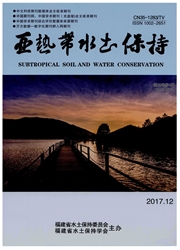

 中文摘要:
中文摘要:
在中国的 Dunhuang Mogao 洞穴被联合国教科文组织在 1987 指定为一个世界遗产地点并且以它的文物著名。当它损坏洞穴,水是在洞伤害遗物的最活跃的因素壁画和油漆雕塑。因此,决定水来源和水运动的驱动力是为保护这些文物的一个关键问题。这些问题有麻烦遗物保护者很长时间。在这研究,作者在 Mogao 洞穴选择了一个代表性的洞并且由完全封上洞做一个封闭系统,从包围岩石测量了水蒸汽。这被为水蒸汽的收集安装一个冷凝作用除去湿气温度湿度控制系统完成。结果证明从进洞的深包围岩石有连续蒸发。每日的蒸发能力决心是 1.02 g/(d 吗?
 英文摘要:
英文摘要:
The Dunhuang Mogao Grottoes in China was designated as a world heritage site by UNESCO in 1987 and is famous for its cultural relics. Water is the most active factor that harms the relics in the caves as it damages the grotto murals and painted sculptures. Thus, determining the water sources and driving forces of water movement is a key issue for protecting these cultural relics. These issues have troubled relics protectors for a long time. In this study, the authors chose a representative cave in the Mogao Grottoes and, by completely sealing the cave to make a closed system, measured the water vapor from the surrounding rock. This was accomplished by installing a condensation-dehumidification temperature-humidity control system for the collection of water vapor. The results show that there is continuous evaporation from the deep surrounding rock into the cave. The daily evaporation capacity is determined to be 1.02 g/(d·m2). The water sources and driving forces of water movement were further analyzed according to the character of the water evaporation and by monitoring the temperature and humidity of the surrounding rock. It was found that the water vapor in the cave derives from phreatic water. Moreover, the yearly fluctuation of temperature in the surrounding rock and geothermal forces are the basic powers responsible for driving phreatic evaporation. Under the action of the yearly temperature fluctuations, decomposition and combination of bound water acts as a "pump" that drives phreatic water migration and evaporation. When the temperature rises, bound water decomposes and evaporates; and when it falls, the rock absorbs moisture. This causes the phreatic water to move from deep regions to shallow ones. Determining the source and dynamic foundation of the water provides a firm scientific basis for protecting the valuable cultural relics in the caves.
 同期刊论文项目
同期刊论文项目
 同项目期刊论文
同项目期刊论文
 期刊信息
期刊信息
